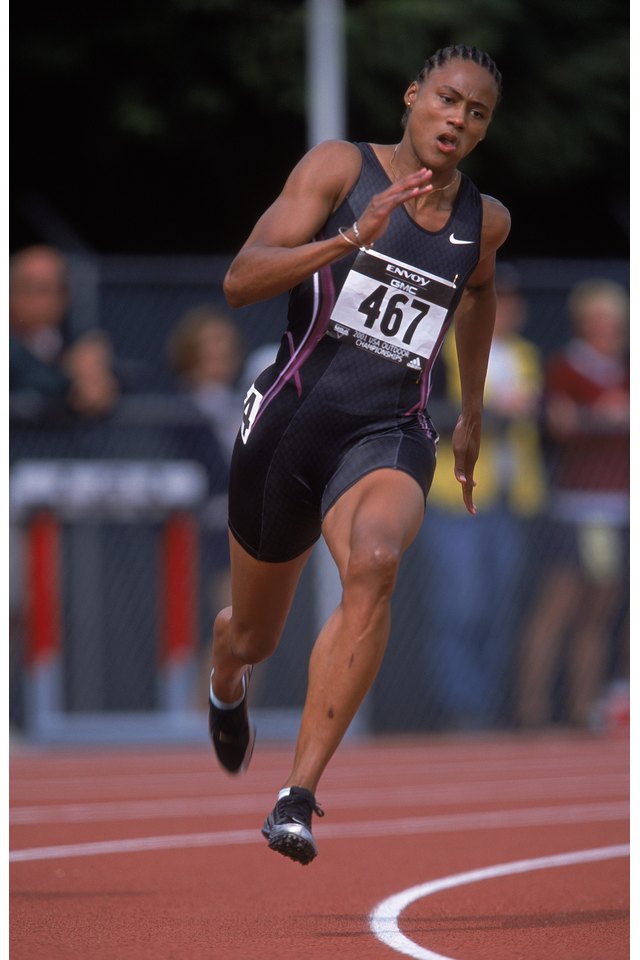Techniques for Curve Sprinting

Track athletes who participate in the sprint events have to know how to run the curves. While the 100-meter dash is run on a straightaway portion of the track, all other events include curves. That includes the 400-meter relay, in which four runners each run 100 meters around the track. All runners should understand the principles of centrifugal and centripetal force to run the curves properly.
Driving Through the Curve
When you are running around the curve in an event like the 200- or 400-meter dash, you cannot run as fast as you can on the straight portions of the track. However, you are running just as hard and your concentration needs to be focused on each step. As you run the curve, you must lean into it. The forces of centripetal and centrifugal force will pull you inward and push you outward, respectively, and you must factor those in as you run or you will lose your balance. Track coach Latif Thomas teaches his sprinters to lean into the curve as they run to have the most efficient run.
Psychological Impact
When runners compete in the 200- or 400-meter dash, they start on a curved portion of the track. Most sprinters prefer the middle lanes -- 4 and 5 -- but a poll of sprinters conducted by four Texas track coaches indicated that the vast majority want to start on the inside lanes 1 and 2 rather than the outside lanes 7 and 8. While the angle of the curve is much more severe than it is on the outside portion of the track, runners said they preferred the inside lane because it allowed them to have more knowledge of what was happening in the race than if they had started in the outside lanes.
200-Meter Strategy
When considering the curve in the 200-meter dash, Thomas urges his sprinters to work out their strategy before the race. Through the first 40 meters, Thomas has his sprinters run all out. Then they should coast from the 40-meter mark through 110 meters. At that point runners must accelerate for the next 30 meters and then relax through the finish. "Coasting" and "relaxing" does not mean slowing down. It means getting all the tension out of your upper body as you sprint. Thomas knows it is impossible to sprint the race at full speed. The best way to run a sprint is to stay relaxed to run with the most speed.
Coming Out of the Curve
When you are in the final strides of the curve, you are starting to have a taller profile while sprinting. You want to be able to have a long smooth stride with maximum extension. This requires you to come off the inward body lean you had in the curved portion of the track and run with a more straight-up stance. This must be done as you finish the curve. If you wait until you are starting the straightaway portion of the track, you will lose balance and momentum.
Writer Bio
Steve Silverman is an award-winning writer, covering sports since 1980. Silverman authored The Minnesota Vikings: The Good, The Bad and The Ugly and Who's Better, Who's Best in Football -- The Top 60 Players of All-Time, among others, and placed in the Pro Football Writers of America awards three times. Silverman holds a Master of Science in journalism from the Medill School of Journalism.
